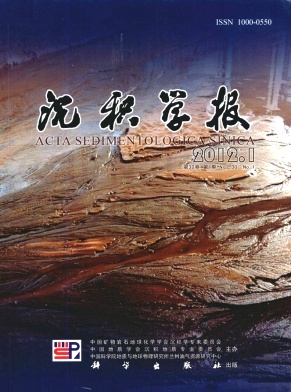Recent Spatial Pattern and Temporal Variation in Sediment Grain Size in the Inshore Area Adjacent to the Yangtze Estuary and Hangzhou Bay
- Publish Date: 2012-02-10
-
Key words:
- sediment /
- grain size /
- anthropogenic impact /
- climate change /
- Yangtze Estuary /
- Hangzhou Bay /
- East China Sea /
- /
- /
- /
- /
- /
Abstract: Grain size of sediment in littoral area of estuaries is vulnerable to humaninduced changes in riverine sediment supply and coastal hydrodynamics. In recent years, sediment from the Yangtze River to the sea has drastically decreased, which has resulted in erosion in the subaqueous delta. Meanwhile, many coastal engineering structures have been built at the mouth of the Hangzhou Bay. Less has been known of the sedimentary impacts in the inshore area adjacent to the Yangtze Estuary and Hangzhou Bay. To examine the spatial pattern of and recent changes in sediment grain size in the littoral area off the Yangtze Estuary and Hangzhou Bay, we obtained 33 surface sediment samples using a box sampler and 7 sediment cores (1.4 to 4.8 m in length) using a vibro piston corer in April 2008. These samples were analyzed for grain size parameters in the laboratory using a laser particle size analyzer. Comparison of grain size was made between the present result and results of historical periods. The results include: 1) In agreement with the results of historical periods, the present study showed an overall spatial pattern of coarse sediment in the east (sand) and finegrained sediment in the west (mud). Nevertheless, in contrast to the historical results, the borderline between the sand and mud areas has retreated landward (or westward) for 10 to 30 km in the northern portion (off the Yangtze Estuary and the main Hangzhou Bay) whereas it has advanced seaward (or eastward) for up to 50 km in the southern area (south of the Zhoushan Archipelago). 2) In comparison with the results of historical periods that the longshore distributed mud (clay) zone was disconnected at the east of the Zhoushan Archipelago, the spatial pattern of surface sediment grain size in the present study indicated a consecutive longshore mud zone, which suggests the historical disconnection of the longshore mud (clay) zone at the east of the Zhoushan Archipelago has disappeared at least for surface sediment. This change was mainly attributed to the construction of large bridges across the channels between the islands of the Zhoushan Archipelago. The piers of these bridges were considered to have reduced the water and sediment exchange between the Hangzhou Bay and the East China Sea and weakened the currents at the previous disconnecting area of the longshore mud (clay) zone. 3) The results of grain size trend analysis of surface sediment along the longshore mud zone support the hypothesis that the sediments derived from the Yangtze River have been mainly transported southward and southeastward.4) The core sediments, sampled successfully in the mud zone (we failed to sample core sediment in the sand zone), are mainly composed of silt and clay. Most of the cores show significant vertical fluctuations of grain size. These vertical fluctuations seem to reflect historical events of climate changes which have resulted in longterm changes in riverine sediment supply and ocean hydrodynamics. The surface sediment of the cores sampled in the recent erosion area (recognized by other authors based on bathymetric comparison) indicates a coarsening trend, which is considered to have resulted from the recent drastic decrease in riverine sediment supply. We conclude that the sediments in the littoral area of the Yangtze Estuary and Hangzhou Bay are susceptible to anthropogenic and climate impacts both from the catchment and the coastal region.
| Citation: | Recent Spatial Pattern and Temporal Variation in Sediment Grain Size in the Inshore Area Adjacent to the Yangtze Estuary and Hangzhou Bay[J]. Acta Sedimentologica Sinica, 2012, 30(1): 137-147. |






 DownLoad:
DownLoad: